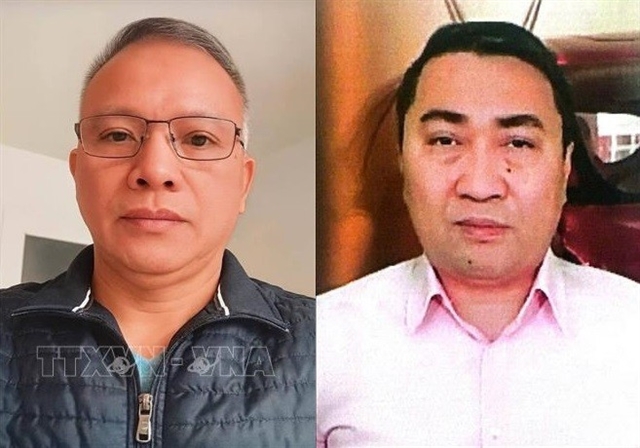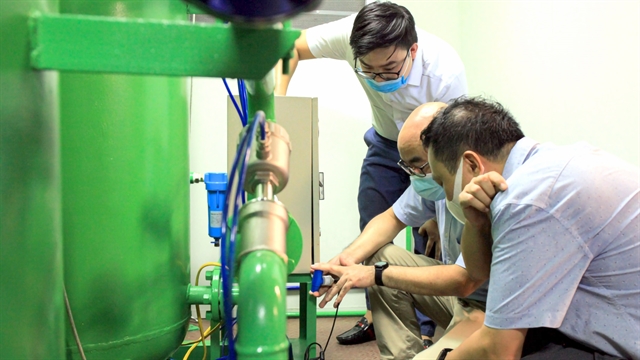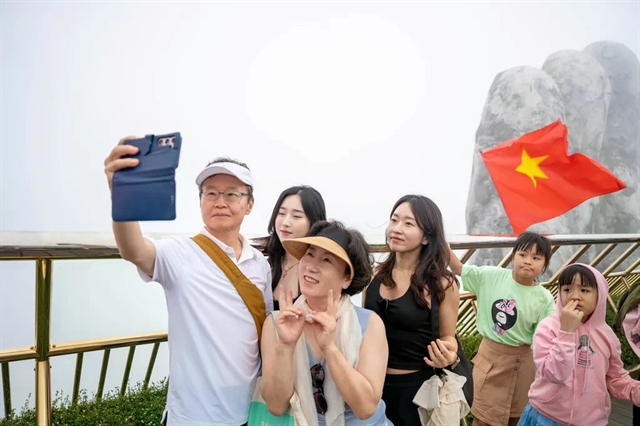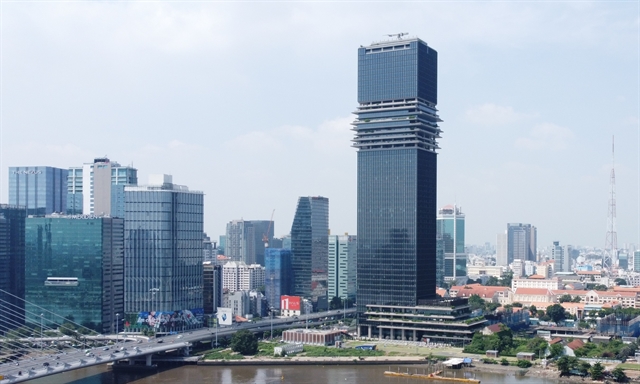 Society
Society

Scientists from Hanoi University of Science and Technology (HUST) have designed and built a mobile oxygen and medical compressed air generator station to help the country fight COVID-19.

|
| Scientists worked around the clock to build a mobile oxygen and medical compressed air generator station in three weeks during social distancing period. Photo courtesy of HUST |
It enriches oxygen from the air by Pressure Swing Adsorption (PSA) technology including two columns of molecular sieve adsorbent.
These work alternately with the supply and discharge air columns through an automatic control valve system.
Each mobile station can create oxygen and medical compressed air to run the ventilators and high-flow oxygen machines for 20 beds in ICU or it can provide oxygen for 60 to 70 mild patients to breathe easily.
The IoT function is also designed to connect, monitor and control the system remotely.
Currently, the supply for oxygen in Việt Nam mostly comes from the oxygen manufacturers in the form of oxygen tanks. There are many oxygen generators on the market but they only have small capacity.
“We are proud that we are the first unit in Việt Nam to successfully research, create and manufacture the large capacity oxygen generator system.
“To run ventilators and high-flow oxygen machines, we need both oxygen and medical compressed air. So what makes this machine different from imported products is that it can supply not only oxygen but also the medical compressed air.”

|
| The NOVAO2-Mobile System can generate oxygen with concentration of 90 to 96 per cent. Photo courtesy of HUST |
Even though the group had to work during social distancing, they still co-operated well and completed their task in a short space of time.
Vũ Duy Hưng, a group member, said: “We started the task from late July when the social distancing was in place.
“We had to deal with many difficulties when working during that time. When we transported the materials, we had to explain a lot to pass many strict checkpoints.
“We also had to implement the three-on-site production model throughout the manufacturing process. We ate, worked and slept in the factory. What made me most happy is that everyone is united and determined to work until 9pm every day to complete the task no matters how hard the working conditions were.”
While all the members are pleased that they have managed and built the system in a short time, they feel most proud of the contributions they have made to help the country fight the pandemic.
“When we successfully made the mobile system, I felt very happy. But I feel more proud when seeing two stations delivered to the south,” Hưng said
“I'm proud that Vietnamese now can produce many products ourselves and the products’ quality is not inferior to that of other countries such as South Korea or China.”
The group hope they can co-operate with manufacturing businesses or transfer technology to other provinces to mass-produce the device when needed.
Tiến added: “According to our own capacity assessment, our group can create one mobile oxygen and medical compressed air generator station like this per week.
“So to be ready for mass production, we need to collaborate with other businesses or transfer technology. If needed, we can produce in many places at the same time to meet the demand for oxygen.”
With the support of the Ministry of Science and Technology, the group will continue to research, innovate the design as well as increase the station’s capacity in the future.
“If this mobile system can be put into use soon in pandemic hotspots, I believe it can help save the lives of many patients who are deprived of oxygen due to COVID-19 infections,” Tiến said.
“In the future, when the pandemic is well controlled in the country, this mobile system can be developed to serve in the remote, border and island areas where they have limited access to industrial oxygen.
“It can help improve the quality of medical examination and treatment for patients with respiratory failure in those areas.” VNS

|




